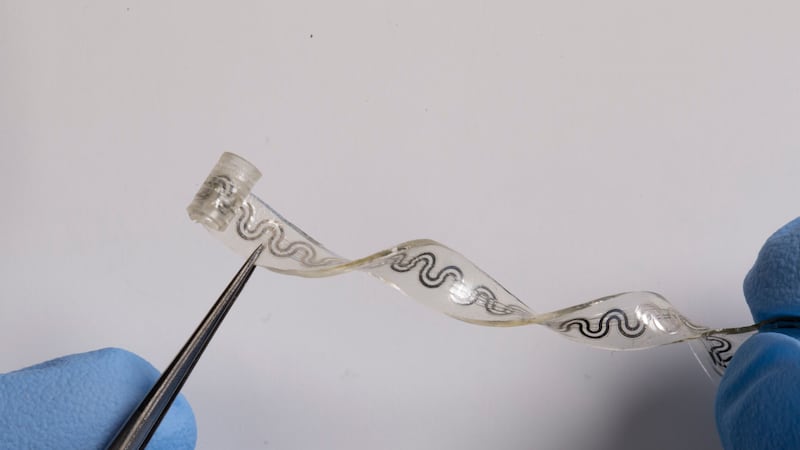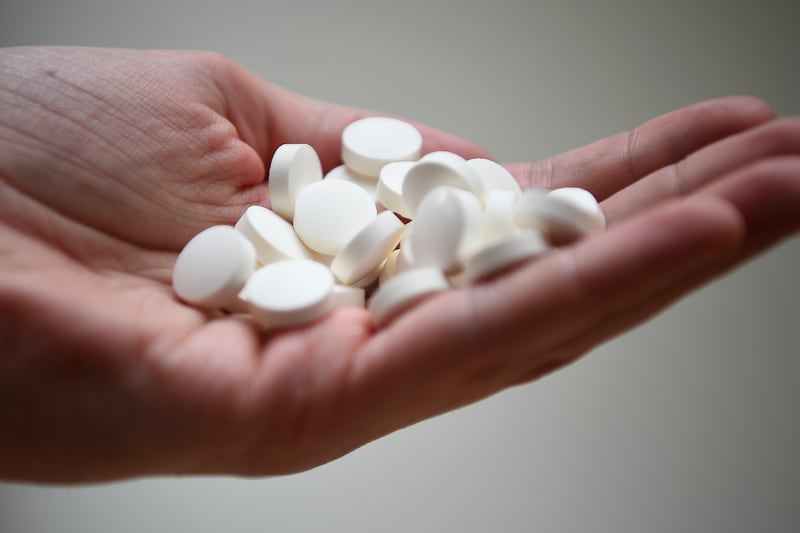Scientists have developed a small, soft, flexible implant that relieves pain on demand and without the use of drugs.
The new device has the potential to provide an alternative to opioids and other highly addictive drugs, researchers suggest.
It works by softly wrapping around nerves to deliver precise, targeted cooling, which numbs nerves and blocks pain signals to the brain.
This resembles the mechanism at play when the cold causes people’s fingers to feel numb.
A user can remotely activate the device with an external pump, and then increase or decrease its intensity.
According to the study, after the device is no longer needed, it naturally absorbs into the body, meaning it does not need to be surgically removed.
At the thickness of a sheet of paper, the soft, elastic nerve-cooling device is ideal for treating highly sensitive nerves, researchers say.
John Rogers, Northwestern University, America, who led the device’s development, said: “Although opioids are extremely effective, they also are extremely addictive.
“As engineers, we are motivated by the idea of treating pain without drugs — in ways that can be turned on and off instantly, with user control over the intensity of relief.
“The technology reported here exploits mechanisms that have some similarities to those that cause your fingers to feel numb when cold.
“Our implant allows that effect to be produced in a programmable way, directly and locally to targeted nerves, even those deep within surrounding soft tissues.”
Researchers believe the device could be most valuable for patients who undergo routine surgeries or even amputations that often require pain medication after the procedure.
Surgeons could implant the device during the surgery to help manage the patient’s post-operative pain.
“An implantable cooling device with on-demand local analgesia will be a game-changer for long-term pain management,” write Shan Jiang and Guosong Hong in a related Perspective.
The device uses a simple concept that everyone knows – evaporation.
Similar to how evaporating sweat cools the body, it contains a liquid coolant that is induced to evaporate at the specific location of a sensory nerve.
At its widest point, the tiny device is just five millimetres wide.
One end is curled into a cuff that softly wraps around a single nerve, meaning no stitches are needed.
Prof Rogers added: “If you think about soft tissues, fragile nerves and a body that’s in constant motion, any interfacing device must have the ability to flex, bend, twist and stretch easily and naturally.
“Furthermore, you would like the device to simply disappear after it is no longer needed, to avoid delicate and risky procedures for surgical removal.”
The findings are published in the journal Science.








